“One day persimmons could rival the popularity of the avocado,” Brett Guthrey tells The Farmer as he strolls through his lush persimmon orchard on the Nepean River, near Cobbitty in Greater Sydney.
It’s a big call but the former chair of NSW Farmers’ Horticulture Committee and past president of Persimmons Australia says the fruit has been dubbed by the NSW Department of Primary Industries (DPI) as the “next up and coming emerging market”, with a predicted value of almost $16 million by 2021.
In early May, The Farmer visited Brett’s orchard, Kathleen Haven, to find out more about the mysterious and ancient fruit, originating from China – and get a taste for what’s to come. As we arrive, thick layers of fog slowly clear beneath the orchard. Up above, hot air balloons glide by and, as the fruit pickers prepare for harvest, there’s a sense of excitement in the air.
The 38-hectare, third-generation family orchard really is a slice of heaven, nestled in the middle of suburbia. It’s become quite the love affair for Brett, his wife Kate, sons Damien, Brendan and Joshua, and his parents Janette and Lloyd. Purchased in 1958, Brett’s grandfather Harry Wright and uncle David Wright planted the first persimmons at Kathleen Haven more than 40 years ago. Brett now has 8ha planted and the potential to plant another 16ha in the future.
Every year, between early April and May, his parents visit from Perth for six weeks during harvest and packing. The orchard produces 180 tonnes on average each season, including dried and fresh produce, with the plan to add value with pulp and/or vinegar products. Every Saturday, Brett drives to the Sydney Markets, selling until mid-July.
“We’ve found our niche in the market,” he says, while explaining the difficulty and patience required to establish a profitable crop. Astringent persimmon trees can take up to eight years to grow to fruit-bearing age and 15 years for commercial harvest.
Brett prepares his own seeds, which he stores in the coolroom for about six weeks, then germinates in his nursery and grafts or plants in the orchard. This can all take up to three years, with an 80% germination rate and 60% grafting rate.
Grafting involves the joining of a piece of a mature tree (scion) to a seedling (rootstock). At any time he has 2,000 plants in his nursery. “There’s something pretty amazing about planting a seed and knowing it could live for 1,000 years,” he says.
Brett's persimmon seeds are stored for six weeks at 1°C to emulate winter, known as (seed stratification) – the process where seed dormancy is broken in order to promote this germination.
There are two types of persimmons. The traditional astringent heart-shaped fruit needs time to ripen before eating, or has to be treated with carbon-dioxide to break the tannin cells and remove astringency, otherwise it can be bitter. The sweet, non-astringent fruit is crisp and best eaten like an apple. Brett grows the Japanese Fuyu (non-astringent) and Hachiya (astringent).
He is also currently testing the viability of the Spanish variety Rojo Brillante (‘brilliant red’, which he plans to sell as non-astringent), as part of a national program. The hope is to boost productivity, something that’s becoming increasingly hard for growers.
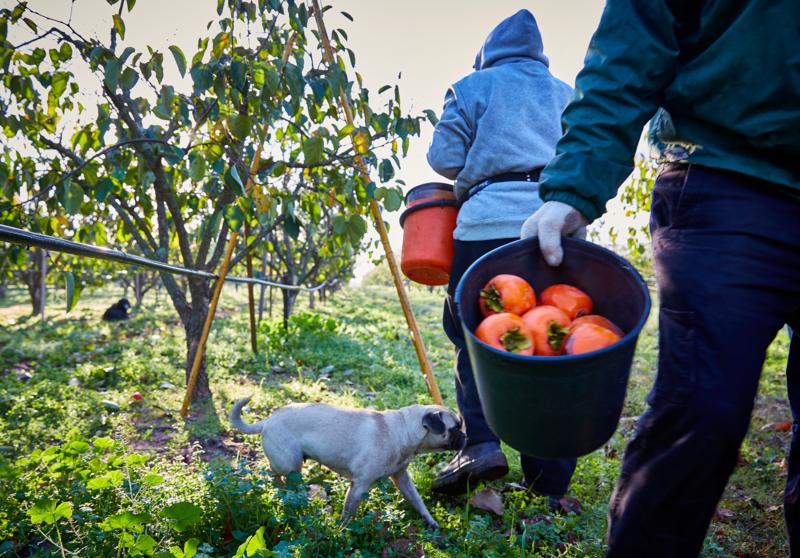
Crystal the pug helps with the persimmon harvest.
This season hasn’t been easy. “We lost 90% of our Hachiya crop outside of the netting due to hail damage,” Brett says. “Prices are up, but quantity is down and even though we’re down 80% of the total crop, you can’t increase your price by 80%.” The hail created huge holes in the net, giving birds access. In a worst-case scenario, Brett says birds can lower yield by 70%.
He’s been told it would cost about $120,000 to replace and install the netting. “At the moment we can insure the net against fire but not storm damage. There’s 2,000 sprinklers under the net, so fire isn’t a problem. We’re currently asking the government to provide access to some form of insurance for netting.”
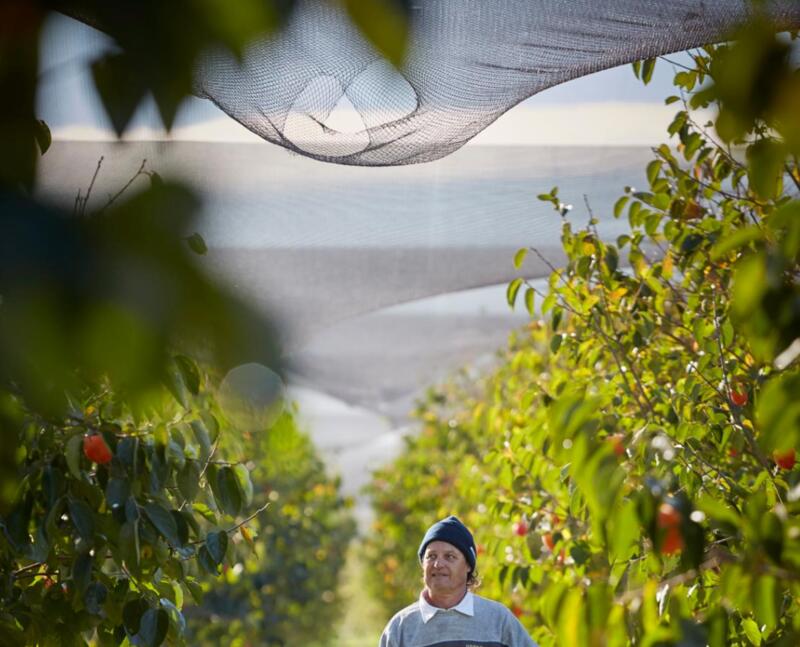 Brett says, it will cost approximately $120,000 to replace and install the netting to protect his crop.
Brett says, it will cost approximately $120,000 to replace and install the netting to protect his crop.
Despite the many challenges, Brett says it is rewarding growing persimmons. “You only get one chance, so you’ve got to get it right. If you don’t have water, your tree dies so water security is really important.”
RELATED: Horticulture growers at wits’ end with water
Brett has an irrigation licence from the Nepean River for 160 megalitres (ML) per year, which he uses with a fertigator delivering potassium, nitrogen and calcium through micro sprays direct to the root zone. The system is run with a temperature gauge to prevent frost at night.
“I water the whole orchard with 40ML because I’m efficient. The biggest reduction in water is through the use of netting,” he says, explaining that it dramatically reduces evaporation and wind.
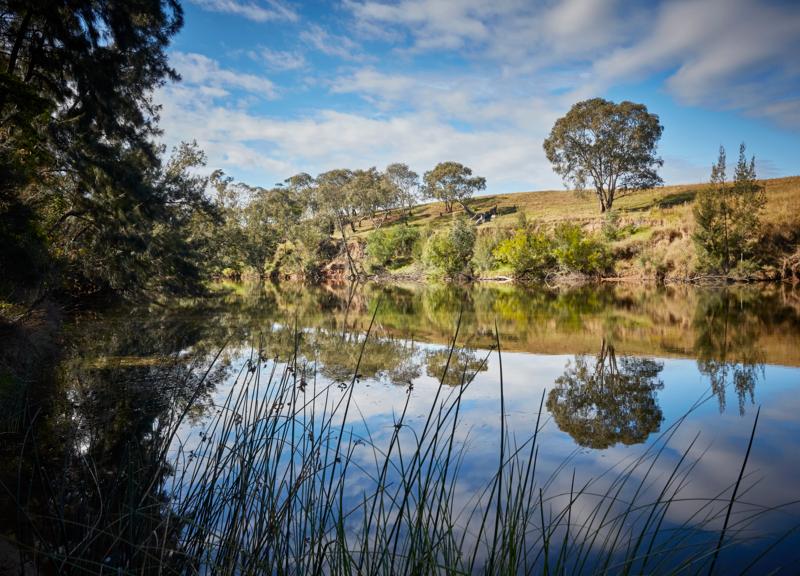
Brett Guthrey pumps water from the Nepean River, Cobbitty.
“I use far less water – 35 litres per hour, per sprinkler, with two sprinklers either side of each tree for three hours on average once a week – which means far less electricity to pump it out.” The cost of production is high, whether it be energy, processing or cold-storage, so he’s always mindful of how he can boost his bottom line.
RELATED:
Clever beef farmers create market for bone broth
The buffalo farmers bucking tradition with cheese
Organic broccoli farmers innovating with powders
Sweet opportunity with Spanish persimmons
In October last year, Brett visited Spain and Portugal with Dr Tahir Khurshid, DPI research physiologist of tree crops and key researcher on the national persimmon varietal evaluation program 2018-2023.
The pair met growers to learn about the Spanish persimmon industry, production and packing techniques, and methods of producing uniform rootstocks through clonal propagation, with the goal of exploring varieties that mature earlier to extend Australia’s growing and marketing season.
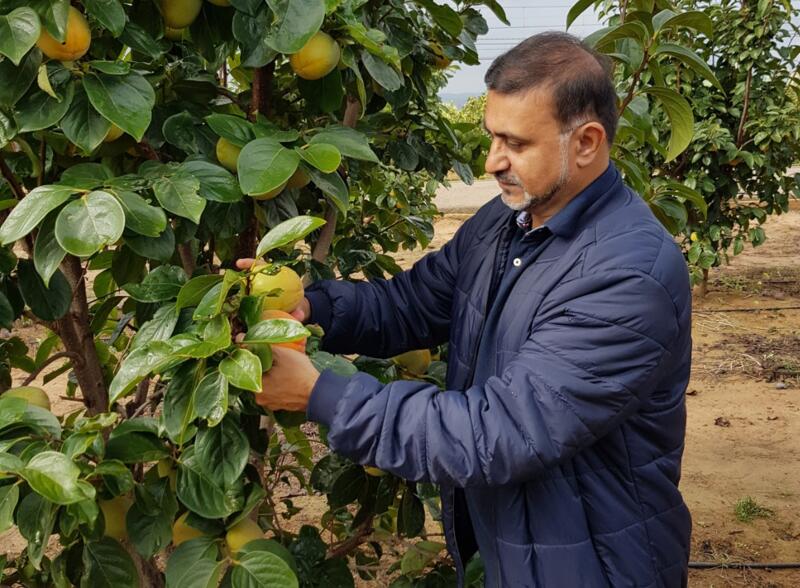 Dr Tahir Khurshid checking Rojo persimmon variety at Canso in Valencia, Spain. Photo: supplied by Dr Tahir Khurshid.
Dr Tahir Khurshid checking Rojo persimmon variety at Canso in Valencia, Spain. Photo: supplied by Dr Tahir Khurshid.
There are three test sites in the program: Brett’s farm, plus sites in South Australia and Queensland that each have a few trees. Each is testing the DNA of the Rojo Brillante variety. The South Australian trial site is showing true-to-type Rojo DNA, says, but other sites have slight variances. This is something they’ll continue to test with a range of existing rootstocks and a collection of budwood from South Australia to produce more trees for next year. Brett has four ‘mother’ trees in his orchard, along with 350 grafted seedlings in his nursery which he’ll plant this year to test.
“I will take the new growth [a little bud] in the winter and put it on the seeds that I’ve grown and that will turn into a Rojo tree,” he says. “How the Spanish grow their Rojos is very different to how I’m growing them. I don’t use pruners and I don’t have people – I have a hedger, that’s because of labour costs. So it’s about, how do I adapt what they’re doing to the methods I want to grow with? I don’t know if it’s going to work but someone’s got to try it, right?”
One of Brett’s goals is to reduce the height of the trees, to be more like Spain. “It’s all about disease, sunlight and increasing production. Clearing out the wood from the middle of the trees would help decrease labour and increase sunlight and spray penetration.”
Spain only grows the Rojo variety, Dr Khurshid says. “It’s beautiful, big and yields 45 tonnes per hectare compared to our Jiro and Fuyu varieties that yield 30-35 tonnes per hectare. It averages 400g compared to Australia’s current growing varieties of 230-270g.”
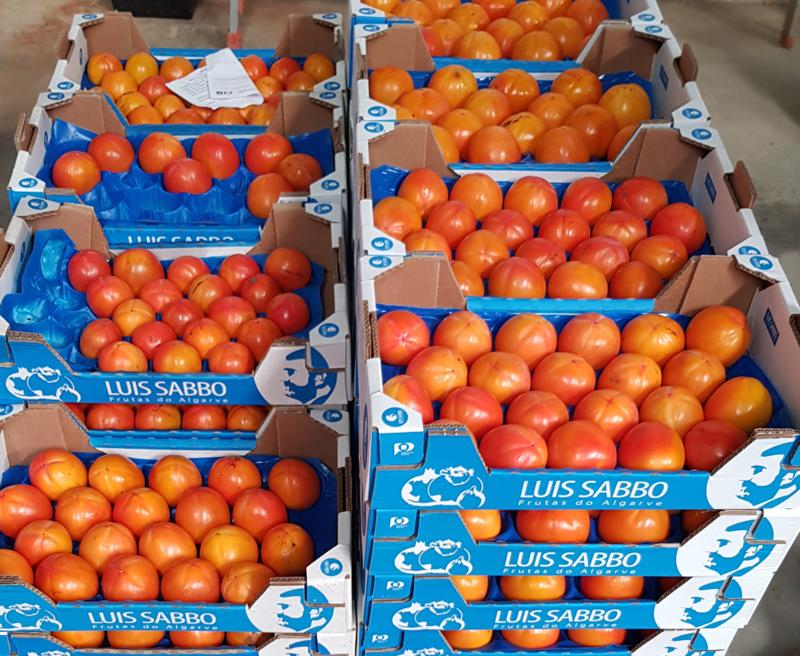 The Rojo Brillante variety of persimmons grown throughout Spain. Source: Supplied.
The Rojo Brillante variety of persimmons grown throughout Spain. Source: Supplied.
Different rootstocks impart different qualities such as vigour, fruit size and maturity rate. Pairing a superior rootstock with the Rojo variety is aimed at creating a more water-efficient, disease-resistant and high-yielding tree that will require less labour.
RELATED: Exploring drought resistant crops in Menindee
The next step, Dr Khurshid says, in terms of drought and water efficiency, will be exploring the benefits of a dwarfing rootstock, averaging up to 2m in height compared to 4-6m. “They’re small and higher density, so more productive, meaning more carbohydrates are converted into fruit, rather than the vegetative structure.”
Managing fruit crop pests and diseases
Brett’s two biggest pests are fruit fly and clearwing moth – and understanding how they operate in his orchard is critical to him controlling them. “The clearwing moth lays its eggs in the tree and gets underneath and we can’t kill it,” he says. “It’s a nightmare, we used to put heaps of sprays on and now we use pheromone twist ties. They have the smell of a female when she wants to mate, which drives the males crazy and stops them from breeding.”
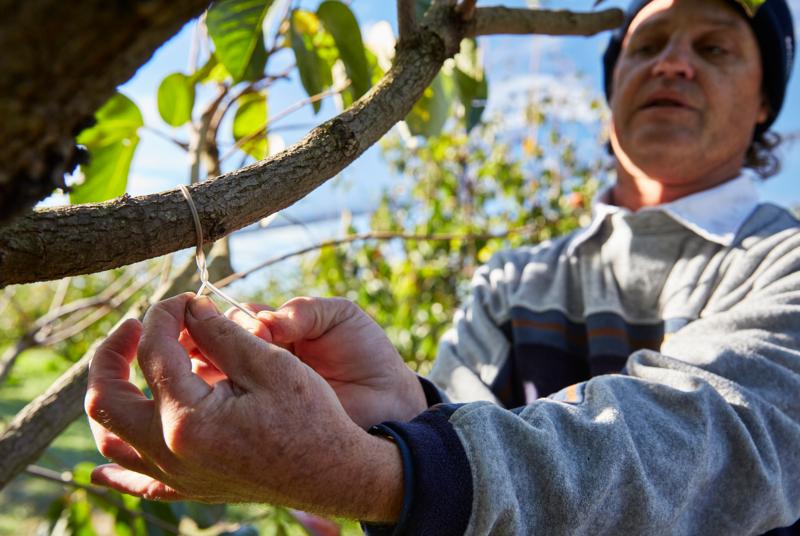
The pheromone twist ties are used to control clearwing moth.
The ties are reasonably expensive but in terms of avoiding the need to spray, they are invaluable, Brett says – plus they only target the moth. Fruit flies are controlled with an insecticide pad placed every 50m in a grid in the orchard to attract males that need protein. Flies will die within two or three days of contact and, until then, can transfer the insecticide to females.
“Every week I’ll go through and count the traps and if I’m getting five to six dead fruit fly on a pad – which means I’m at economic damage – I’ll put a spray out to kill them.” Twenty years ago Brett put up to 10 sprays on his crop. Today he sprays once a year.
Diseases such as cercospora and angular leaf spot are also a big problem and are caused by fogs. “I put a protective spray on to protect the leaves, not for the fruit,” Brett says, because the longer the leaves are on, the healthier the tree is. “If the leaves fall off, the fruit will ripen quicker and that’s a disaster, as I can’t manage how I pick them.”
Harvesting persimmons, a family affair
Harvesting the fruits of their labour brings everyone together at Kathleen Haven. The packing house becomes a sea of orange, and no-one is without a job. The fruit is mechanically graded by weight in nine sizes with two different grades, and then sorted into boxes. The tractor delivers four to five loads of fruit to the shed each day, averaging up to 2.8 tonnes.
Brett’s father Lloyd helps by stamping, sticking and counting fruit. The industrial-size coolroom can store persimmons for up to 10 weeks at 1C.
Fuyus fetch on average $5/kg with top-tier fruit reaching $10/kg. Brett’s Hachiyas are $30 for eight – about $4 per piece wholesale. “That’s quite extraordinary,” he says.
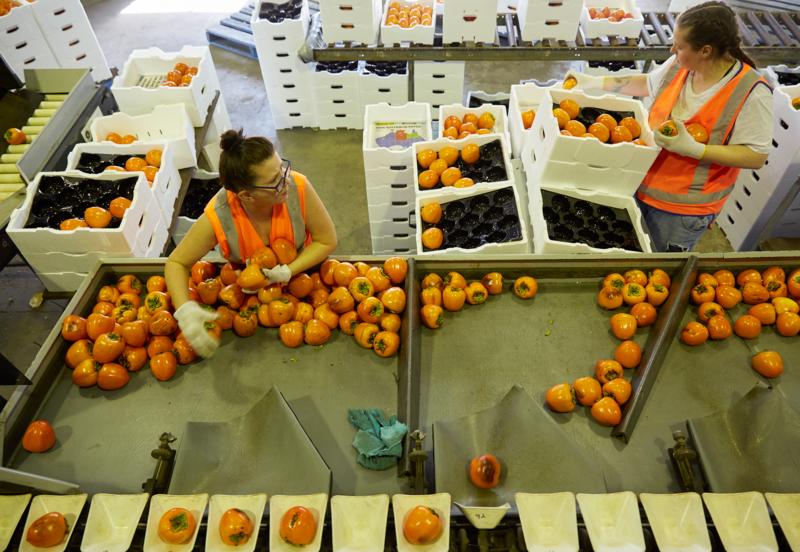 Kate Guthrey (left) and Tamara Leetham sort Hachiya persimmons.
Kate Guthrey (left) and Tamara Leetham sort Hachiya persimmons.
Brett’s mother Janette carefully wraps each piece of the A-grade Hachiyas with black tissue, an idea from 15 years ago. She’s been doing this all her life, she says. “You put the best ones in the middle of the tray, because that’s where the eye goes first. Now you know the secret, so when you go to the fruit shop – you can look at the sides and see.”
Brett adds with a laugh: “They’re more expensive than avocados, don’t tell everyone. They’re virtually sold before they’re even packed.”
Other growers are realising the potential, especially of non-astringent varieties, which count for about 90% of Australia’s production, and there has been a proliferation of plantings in southern growing regions. With non-astringents, growers can get into the market faster, with only a three-year growing period, as opposed to seven for astringents. But Brett says there’s limited supply from the nursery.
“Right now there’s a five-year wait if you want a non-astringent persimmon tree. So there’s big demand, a bit like avocados.”
The market can then become full, he says. “So in terms of industry, how do we get that fruit, develop that market more and get it into Coles, Woolies and into lunch boxes so people are talking about the fruit?”
With 120 growers nationally, Australia must import fruit between June and November to meet local demand. Currently imports (445 tonnes) far outweigh Australia’s export market (183 tonnes), presenting great opportunities for regional expansion of new varieties, like the Rojo, to help increase supply and close market gaps.
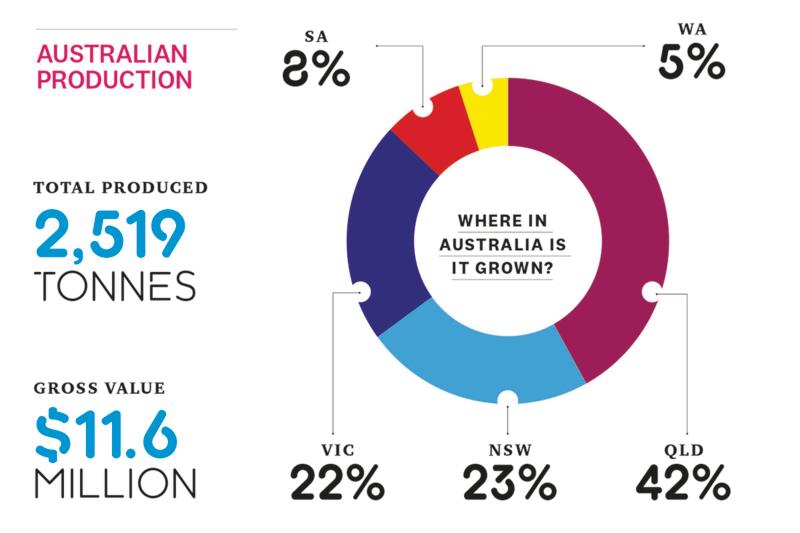
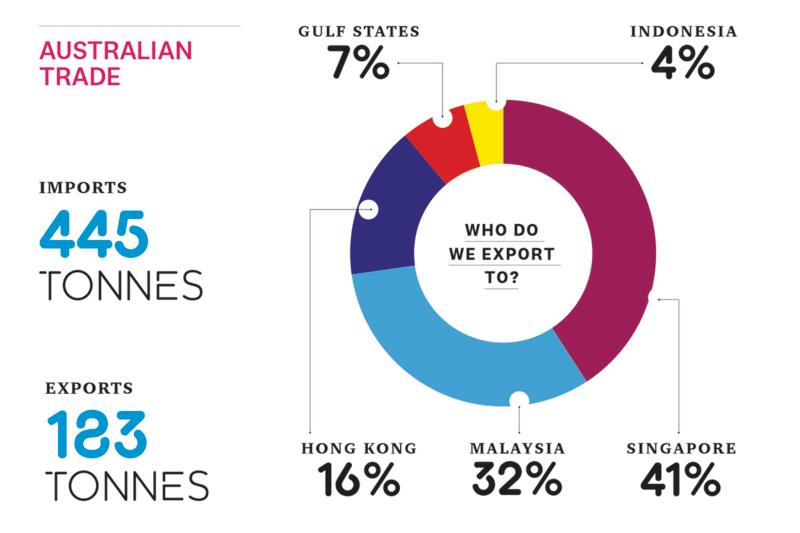 Developing Australia’s persimmon market
Developing Australia’s persimmon market
“The industry’s chasing its tail a bit at the moment but it won’t be long until we’ll have the quantities needed to really develop some export markets and become mainstream,” Brett says. “It’s a challenge for every industry – so it’s not until you get to that stage of surplus that the government says, ‘you’re ready now, we can develop that market and support you’.”
He says it’s hard to get people to try a fruit that’s expensive. Dr Khurshid agrees it’s all about education.
“Persimmons are currently in the corner of supermarkets and they’re very expensive.” He says the industry needs to promote persimmons to mainstream Australia as a fresh eating fruit, not just for cooking, as this is an easier introduction.
RELATED: Blueberry farmers grow their export market
Like other growers, Brett pays an industry levy that goes towards research and development and marketing. “Without more fruit being grown there isn’t a large pool of money for marketing.” He says the national marketing budget is $70,000 a year and “you can’t do much with that”. But as the industry grows and more persimmons come into the market he says the budget will increase. “Every year we can hopefully do more and more.”
How to eat persimmons
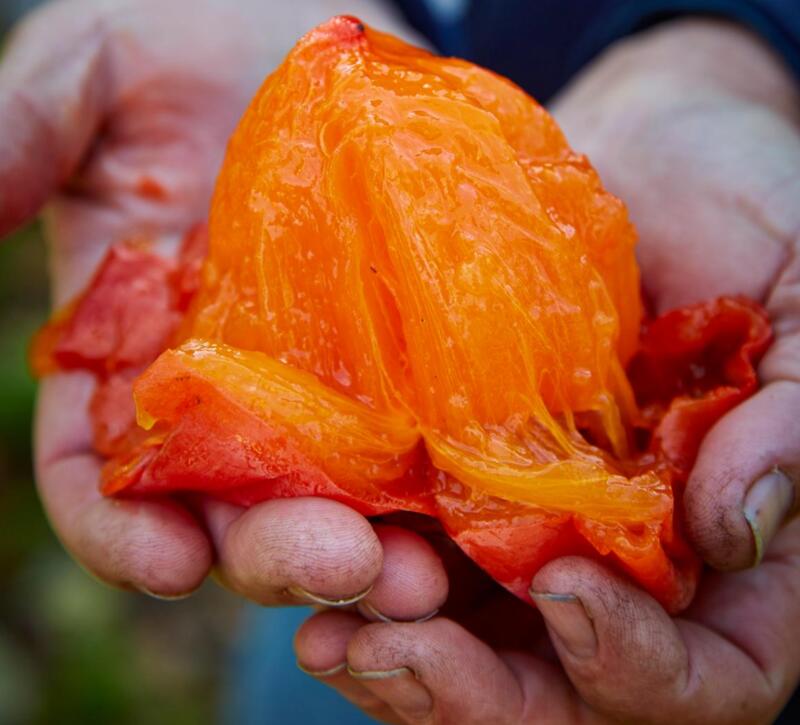
A fresh Hachiya persimmon.
Traditional persimmon (astringent)
Heart shaped with orange skin which becomes deep red when fully ripe and the pulp develops a jelly-like texture. Once ripe, cut open and spoon out the sweet soft flesh. If eaten before ripened the astringency will be unpleasant.
Taste Tip: try as a dessert or healthy snack. Halve crossways through the centre, scoop out the flesh and enjoy with vanilla ice cream, Greek yoghurt or serve over warm porridge.
Sweet persimmon (non-astringent)
Round with a slightly flattened top at the stem with a pale-to-deep orange colour. These can be eaten firm and crunchy like an apple. Cut into wedges or slices that reveal a decorative star pattern.
Taste tip: try in salads, with cheese or on cereals.